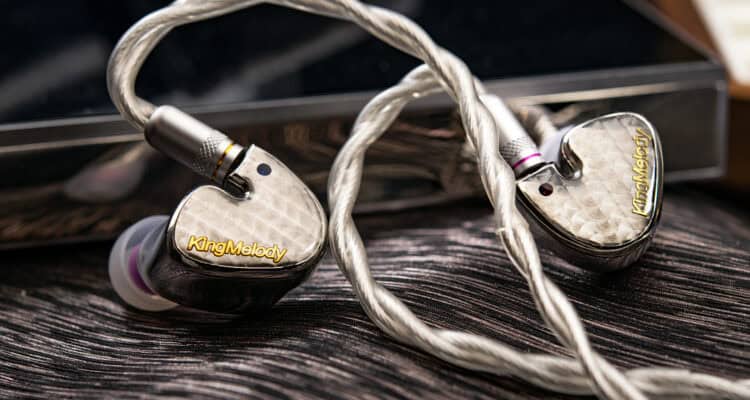
Sound Impressions: Accurate, Wide, and Natural Bass. Not Easy for Full-BAs, except Nautilus.
Looking at the overall feel of the sound, Nautilus has a well-balanced, slightly w-shaped sound signature. It has a neutral-bright timbre that doesn’t over-brighten at the upper ends but just enough to offer a great open-field, open-ended atmosphere. Let’s start with the bass. Nautilus desires an agile, solid bass that is tightly controlled. The quantity is gently elevated from flat, which makes the bass quantity just about slightly v-shaped, which sure wouldn’t be enough for bassheads, though, for those who seek a balanced, reference tuning, Nautilus’ bass will serve you with just the right amount. However, Nautilus differs from many full-BA IEMs I’ve listened to. The bass has a neutral-warm tone, which balances the overall brightness of the sound and the lows also have decent weight and heaviness.
Usually, IEM companies use dynamic drivers, or BC drivers are used for the lows for a cohesive bass that really brings out that dynamic, “flowing-like” liveliness of the bass – and Nautilus generates this natural bass flow surprisingly well only using BA drivers. Even though this may be a new brand for most (while they aren’t new at all in mainland China), this alone has proven to me King Melody’s tuning skills. The ultra-low extension is fair if not impressive for a full-BA IEM, yet it still won’t be enough for those who want that earthquake rumbling.
Nautilus creates a very evenly leveled bass quantity and evenly spread texture across the low frequency. Just like a strawberry jam evenly and well spread across a toast without a big lump or chunk of jam. Nautilus’ evenly distributed bass creates a vast, open-field atmosphere only within the bass, which is a rare find to me.

For the Vocals: Airiness Packed with Dynamics
Mids are a good mixture of crispness and airiness. While the vocals overall have an airy tone, the lower-mids have some warmth with the mid-range. Nautilus has abundant airiness present throughout the mid-range, yet the vocals still have a good thickness in the body (neutral-thick) and hold their ground. This “airiness” is well-tamed, hence the vocals don’t fly all over the place. Meanwhile, it’s fairly common for full-BAs to have bloated, revered mid-range (if not overly thin), Nautilus shows impressively stable and cohesive vocals, keeping a harmonic tone and homogeneous texture throughout the mid-range. It gives a glimpse of a crispier bite on the sibilance area but does not cause sibilance or shrills on the mid-range.
The neutral-thick vocals work well with female vocals but also treat well with male vocals unless you’re looking for a thick-bodied response. Water-like transparency is a key element from Nautilus with the same expansive and well-leveled attitude shown similar to the bass. Yet even still, the color tone doesn’t feel duller or watered-down and brings tight and solid dynamics, giving me satisfactory mid-range density.
However, while Nautilus is tuned comfortably to listen to most people, the airy, shy-bright vocals may not be ideal for super long-term listenings, as Nautilus still does have a rather bright tone, and of course not for those who are sensitive to upper frequencies in general. However, in my case, listening for a few hours straight worked just fine for me. If you’re looking for vocals tuned for a “reference style” while sounding dynamic enough, Nautilus will suit well for you.

The Trebles: EST-Level technicality & Clean Trebles
Highs do have a touch of “raw” balanced armature texture that boldly unveils the texture details and treble extension, yet doesn’t get shrilling or distorted in timbre. Despite the treble drivers still being a BA driver instead an electrostatics, Nautilus still provides that “EST technicality” and details, offering extra-refined layerings and texture resolution. Nautilus very well replicated the EST experience, or just simply great treble tuning, that many would be deceived by Nautilus using some EST drivers unless told the specifications.
Due to its technical nature and rather high sensitivity, Nautilus plays better with well-recorded, modern music (well-recorded pop, blues, jazz, etc.) than old recordings or genres that require grand or aggressive genres such as hip-hop or rock. Separation is one of the best to be found from this price range making Nautilus to be one of those that punches multiple times above its price, at least for that. As for the soundstage, Nautilus shows a stronger advantage on side width or wideness than depth and height, though this makes sense due to its rather flat, reference-tuned sound (but isn’t actually flat).
Next Page: Comparing with Different IEMs / Verdicts


